Gum Disease Treatment – Lewisville, TX

Protect the Health of Your Gums
Are you paying attention to the state of your gums? Nearly half of adults over the age of 30 currently have gum disease in one form or another, and the odds of developing it only go up as you get older. Healthy gums are essential for a healthy smile, which is why Dr. Jayswal offers a variety of treatments for patients who have symptoms of gum disease. If you’re concerned about your gum health, give us a call today to schedule a consultation.
Why Choose Nexus Dental of Lewisville for Gum Disease Treatment?
- State-of-the-Art Laser Gum Treatments
- Welcoming, Comfortable Dental Practice
- Flexible Financing Options Available
What is Gum Disease?

You’ve no doubt heard of gum disease before, but what exactly is it? Simply put, it’s the result of harmful oral bacteria attacking the soft tissues protecting the roots of your teeth. It may not seem like a particularly worrisome problem at first, but it can grow more severe if it’s left alone for too long. Once gum disease reaches its more advanced stages, it can no longer be cured; at that point, treatment will instead focus on making sure it doesn’t grow worse.
Symptoms of Gum Disease
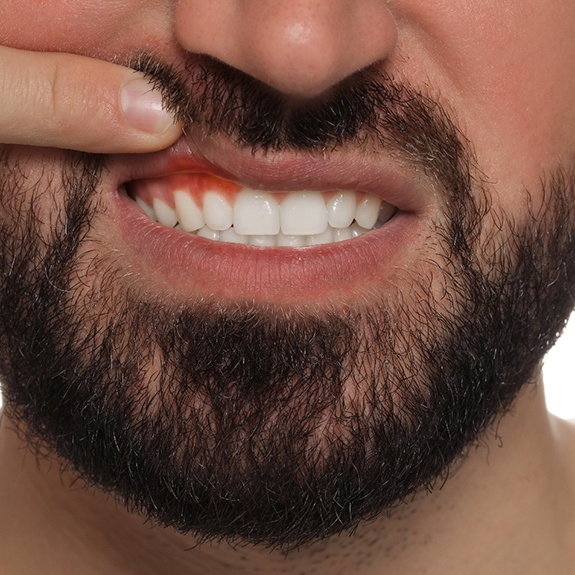
You may have gum disease if:
- Your gums bleed easily or are unusually swollen.
- Gum recession has occurred, exposing the roots of the teeth and causing them to appear longer than normal.
- You have a number of loose permanent teeth.
How Do We Treat Gum Disease?

While you may be somewhat nervous upon learning that you have gum disease, rest assured that our team has multiple ways to help you protect your oral health. There are several treatments that we may recommend based on your unique circumstances. We’ll have to examine your mouth first before we can figure out which type of gum disease treatment is the best fit for you.
Scaling & Root Planing
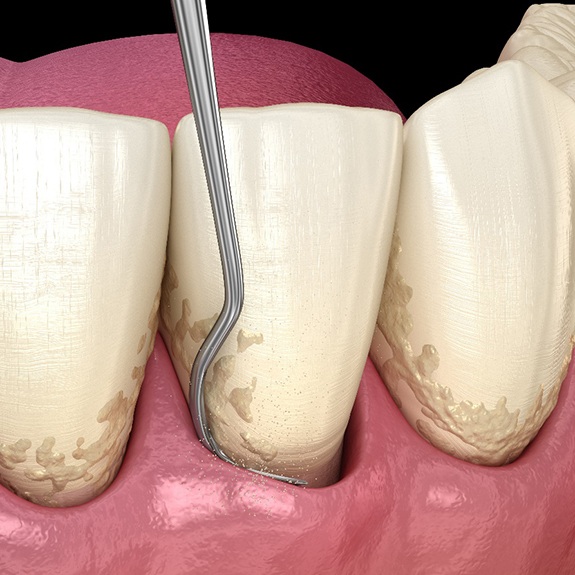
While regular dental cleanings are invaluable, they aren’t always enough when it comes to treating gum disease. In many cases, you will need what is known as a deep cleaning procedure, which specifically focuses on getting rid of any plaque or tartar that has built up around your gum line as well as on the roots of your teeth. A deep cleaning consists of two essential steps: scaling and root planing.
Do I Need Scaling & Root Planing?

This is a question we can only figure out once we have examined your mouth and determined how severe your gum disease is. Generally speaking, scaling and root planing are required once your gum disease has become sufficiently advanced. Gum recession, bleeding gums, problems while chewing, and shifting teeth can all be signs that your smile might require scaling and root planing soon.
The Process of Scaling & Root Planing
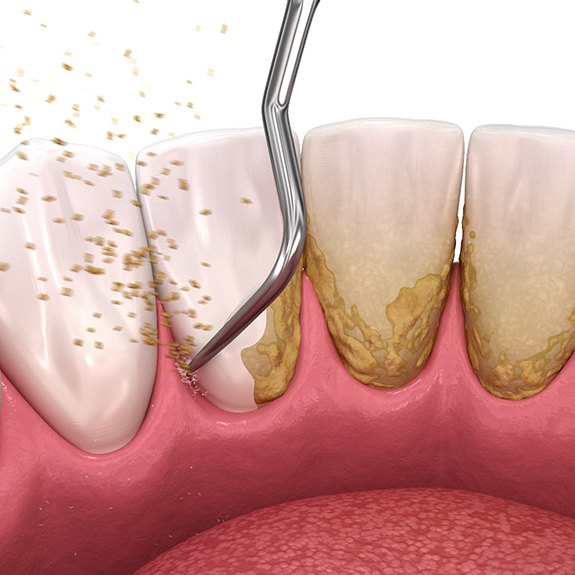
We can numb your mouth for the deep cleaning procedure, thus preventing you from feeling any discomfort. There may be a bit of pressure during the process, but you won’t have to worry about pain.
The scaling step is when plaque and tartar are removed. We’ll pay close attention to the area above and below your gumline. Bacteria can easily build up in the pockets between your teeth and gums, so we’ll take the time to clean them as thoroughly as possible.
However, it’s not enough to simply clean your teeth and gums; we also need to take steps to prevent future accumulation of bacteria. That’s where root planing comes in. It involves smoothing out the roots of the teeth, creating a surface that bacteria have a harder time clinging to.
Aftercare Tips for Scaling & Root Planing
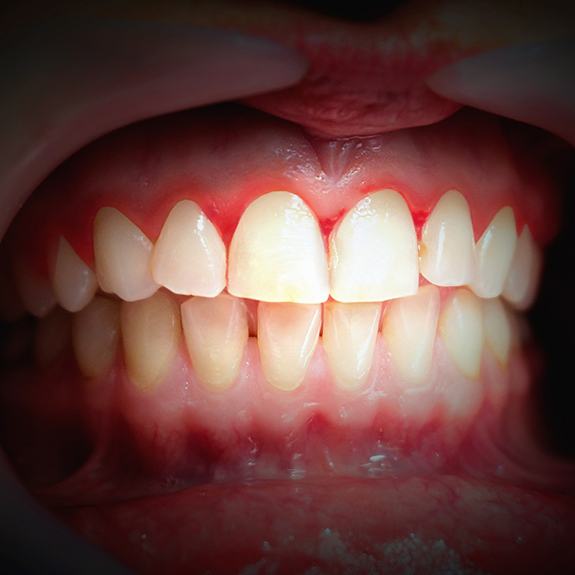
There may be some sensitivity and discomfort in your mouth in the days following your scaling and root planing treatment. Our team can give you tips for staying as comfortable as possible during the recovery period. Here are some of the steps that you will need to follow:
- To avoid biting your tongue or cheek by accident, do not eat anything after your appointment until the local anesthetic used to numb your mouth has worn off. (This typically takes around two hours.)
- Reduce your discomfort by rinsing with salt water on a regular basis. You can also take an over-the-counter painkiller if you need to.
- Maintain good oral hygiene by brushing and flossing like normal. Don’t forget to be very gentle when cleaning the areas of your mouth where scaling and root planing were performed.
- Be mindful of what you eat. It’s generally recommended that you plan on only eating soft foods for at least a couple of days after your procedure. While your mouth is still sensitive, stay away from anything spicy or acidic; you should also avoid especially hot or cold foods.
Antibiotic Treatment

Even with a deep cleaning, there could still be some bacteria hiding at the bottom of the pockets between your teeth and gums. To fight these bacteria, we can apply an antibiotic known as Arestin to the affected area. Arestin consists of a number of microspheres that contain the medication, which will slowly be released over time in order to fight any bacteria that are still present.
Laser Periodontal Treatment
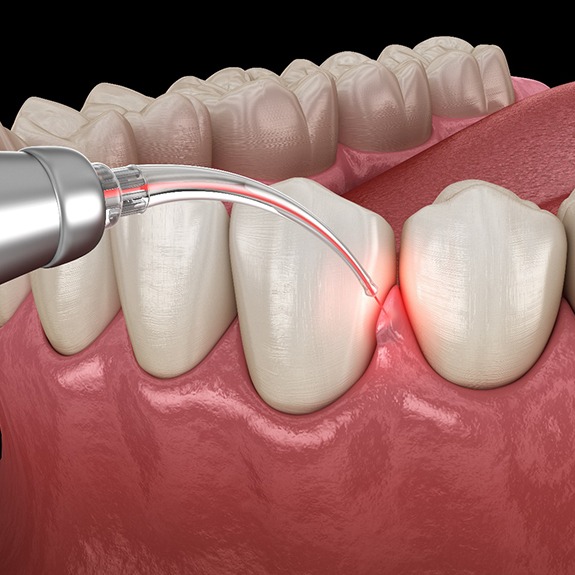
Soft-tissue lasers have changed the way that dentists treat gum disease. With this technology, we can target the damaged parts of your gums and gently remove them. The energy from the laser also helps eliminate harmful bacteria. Compared to procedures performed with traditional dental instruments, laser periodontal treatment causes significantly less bleeding and swelling.
Gingivectomy

If the diseased tissue in your mouth is left alone, it could eventually lead to tooth loss. To help you avoid these kinds of consequences, we can perform what is known as a gingivectomy, which is when we remove the diseased parts of your gum tissue. This goes a long way toward getting rid of the infection, and it also helps shrink any periodontal pockets.
